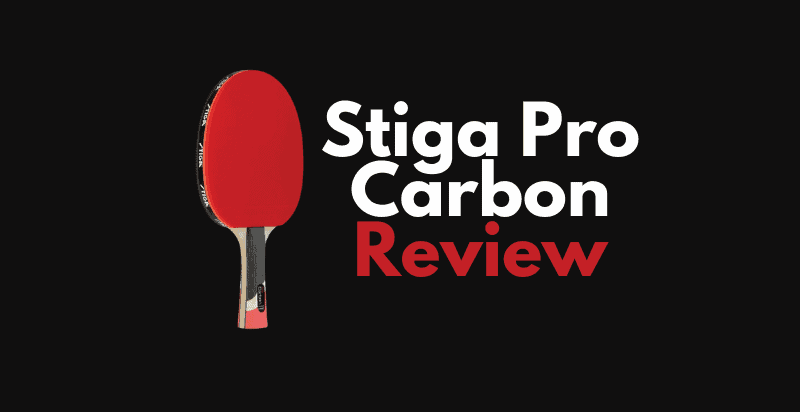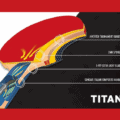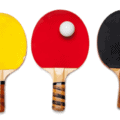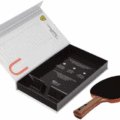Swedish company Stiga is a table tennis phenomenon. They’re world leaders, competition beaters, game changers, and innovators. If it can be done in table tennis, chances are, Stiga has already done it. If they haven’t, they’re either working on doing it or testing the prototype for whatever it is in a top-secret facility, hidden somewhere deep in the mountains of Sweden. Stiga is all about table tennis and table tennis is all about Stiga. They’re inextricably tied together and in the minds of most ping pong devotees, and just like Frank Sinatra’s take on marriage, you can’t have one without the other.
So, it goes without saying that as far as table tennis rackets, or ping pong paddles as they’re also commonly known, are concerned, the brand that any discerning player should be using, or looking to use, is Stiga. Producing a wide range of rackets, which Stiga also refer to as bats, that cater to, and can cope with, the whims, foibles and individual idiosyncrasies of every player’s game, whatever level of skill you possess, a Stiga bat, racket or paddle, can, and will, improve your game.
The Pro Carbon is, primarily, an intermediary paddle that has also found favor with, and is used is, by the table tennis elite. Designed to be comfortable from the off, the Pro Carbon is a relatively inexpensive way of pushing your game to its absolute limits and when you finally reach that barrier, the Pro Carbon forces you to dig deep, breakthrough and travel beyond what you thought was previously possible.
Okay, we know what you’re thinking right about now. Or we can at least guess. It’s something along the lines of “How can a ping pong paddle do all of that?” isn’t it? Normally we’d have to agree with your skepticism because after all, a paddle is just a paddle, isn’t it? Maybe that was true once, but it isn’t anymore. Stiga has pushed the science of what a paddle can do to places hitherto unknown and have channeled everything that they’ve discovered, all of their mystical, arcane, and cogent secrets, into every paddle they produce.
This means that the Pro Carbon is packed full of technology that has a singular purpose. To deliver the kind of response that you dream about while improving your game. Technically, that’s two things, but as one is fundamentally linked to the other, they’re sort of the same. Even if they’re not, and you can separate one from the other, that just accentuates the fact that the Pro Carbon is a world-class paddle that retails at entry-level money.
Talking about technology lets delve a little more deeply into what it is that makes the Pro Carbon tick and a real force to be reckoned with. The beating heart of every table tennis racket is its blade. The blade is made up of the handle and part of the paddle that rests between the rubber surfaces that are used to strike and propel the ball. Stiga knows that the player who has ultimate control over their blade ultimately controls the game. Knowing that, they developed a patented system called WRB which lies at the center of every, including the Pro Carbon, Stiga paddle.
Stiga's WRB Technology
WRB uses a combination of three separate factors to make Stiga paddles better than the rest. The weight balance (W) of the paddle shifts to the point at which it makes contact with, and hits, the ball. The comparative lightness of a WRB blade increases the rate at which a player can recover (R) and prepare for their next shot. And the final part of the equation, (B) is about feeling the ball through the paddle which gifts the player a greater degree of sensitivity and control, thanks to an optimally placed recess in the handle of the blade. That WRB system? That’s just part of what makes the Pro Carbon a giant killer.
In addition to WRB, the Pro Carbon is built from incredibly lightweight balsa, which thanks to reducing the overall weight of the paddle, increases its speed and response time. But that’s not all, as the Pro Carbon’s blade is also hardened by another of Stiga’s patented processes, which adds a whole other level of rapidity to the Pro Carbon. And let’s not forget that the Pro Carbon also uses ITTF (Internation Table Tennis Federation) approved rubber in its construction which means that it’s competition ready to deliver the sort of performance that the exactingly high standards of the game demand.
Stiga's ACS Rubber Technology
Let’s focus on that rubber for a minute. In the Pro Carbon, that rubber uses something called nano compositing, and no we don’t have a clue what means or what it is either, which tightens and strengthens it meaning that in the right hands, it allows the paddle to produce extra spin and up the speed of the ball. Then there are the air pockets in the rubber. The tiny microscopic air pockets, that increases its elasticity, which boosts the control the player has over both the racket and the ball. Who knew that rubber could be so beneficial to a ping pong paddle?
However, what makes the Pro Carbon unique among Stiga rackets is the two separate layers of carbon that are incorporated into the blade, adding a quantifiable amount of rigor to the bat, which sharpens the response time that the player demands from it. Now that you know how much technology goes into the Pro Carbon, do you still think that a paddle can’t improve your game? Welcome aboard the Stiga train, next stop Pro Carbon and calling at all stations on the road to table tennis glory.
While the amount of scientific development that has gone into the Pro Carbon is, frankly staggering, what does it all mean and how effective is it when it comes to using the paddle? How does the technology the Pro Carbon uses actually translate into performance? Honestly? A lot more than you’d ever imagine.
What it effectively does is make the Pro Carbon a high speed, handheld table tennis hand grenade. The massive amounts of technology built into the blade and the rubbers of the bat make it a powerful and incredibly quick paddle that just about outstrips and out-performs every other racket in a similar price range. Designed for players who like to go on the offense, it’ll add an additional level of power and speed to your game that’s difficult to match and even more difficult to keep up with. The Pro Carbon has earned its reputation and it isn’t about to give up its position any time soon.
Pros
- Like all Stiga paddles, the Pro Carbon’s performance is matched only by its exceptional looks and the way it feels in your hand.
- And speaking of performance, the sheer power and speed of this paddle are almost unbelievable. The Pro Carbon is the intermediary level racket that delivers professional performance and will help your game to soar. It isn’t a paddle you want, it’s the paddle you need.
- Remember we talked about how good the rubber is? That rubber gives the Pro Carbon a ridiculous amount of spin. And when we say ridiculous, we mean ridiculous with a capital R.
- It’s incredibly well priced. Seriously, all that game for a tad over fifty bucks? Who would have thought or believed that was possible? Turns out that Stiga did. They not only thought it was possible, but they also made it happen with the Pro Carbon.
Cons
- There is, just as there is with all things in life, a price to pay for all of the technology that the Pro Carbon uses. All of those wonderful scientific advances that are incorporated into its design make the Pro Carbon heavy. That weight can make it difficult to get used to, which means you’ll need to devote additional time and energy to your game to make the most of the Pro Carbon.
- Just as they do in the automotive world, the Pro Carbon’s power and speed create their own set of problems too. With the Pro Carbon, those issues manifest themselves in the form of control, or rather lack of it. It can be a difficult beast to tame but bear with it and you’ll soon learn how to master it. Patience and dedication are the key to playing with the Pro Carbon. Rome wasn’t built in a day and you won’t conquer the Pro Carbon in a week. But give it the time it deserves and it’ll sing any table tennis song you want it to.
- It’s always about that rubber, isn’t it? Some players have noted that the rubber used in the construction of the bat, in conjunction with the design of the handle, can lead to blisters and make the Pro Carbon a painful paddle to use. This leads to an interminable question that, this time at least, seems destined to throw a spanner in the table tennis works. Are you willing to push through and make the sacrifice to improve your game or look elsewhere and settle for second best? The choice is, as ever, yours.

I’m Lia and I love playing games. I started this site to share things with friends and they encouraged me to post more and now I’m trying to share things with the world – indoor and outdoor sports, and board and bar games. I write about things like Bocce, Croquet, Billiards, Darts and other fun ways to enjoy time with your friends and family!







